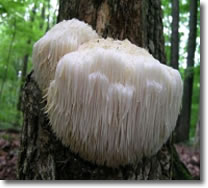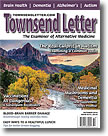|
Page 1, 2
Introduction
As we get older, we all become more vulnerable to various disorders/diseases commonly associated with the aging process. Particularly, memory loss and brain atrophy are believed to be hallmarks of aging. Dementia is a collectively term for progressive degenerative brain disorders that severely impair mental abilities to perform daily tasks.1 The most common or primary form of dementia is infamously known as Alzheimer's disease (AD), representing 60% to 80% of cases.2 AD is a neurodegenerative disorder characterized by progressive memory loss and impairment in cognitive functions (visual perception, speech, reasoning, attention, etc.). It is not only a personal burden but also a socioeconomic burden: the cost of care is actually equal to or greater than that of heart disease or cancer, with the recent estimates of $159 to $215 billion a year in the US.3 Exact etiologies of dementia and AD are unknown, although several risk factors such as older age, genetics, family history, history of head trauma, hypertension, diabetes, and obesity have been postulated.4 No effective medications or medical interventions have yet been available or established, although some of them could improve symptoms.
A variety of mushroom extracts are now available as nutritional supplements for a general health maintenance or medicinal purpose. Among them, in July 2008, Amyloban 3399 was launched as a dietary mushroom supplement that might support healthy brain function, protecting brain nerve cells and stimulating the synthesis of nerve growth factor (NGF). As Amyloban 3399 sounds promising and could be useful for the prevention/treatment of AD or other neurodegenerative diseases, the scientific and medical studies of this supplement are reviewed herein for its beneficial neurological effects.
Medicinal Properties of Lion's Mane (Hericium Erinaceum)
Amyloban 3399 is a product made of Amycenone from the fruit body of lion's mane (Hericium erinaceum), which is standardized to contain hericenones (0.5%) and amyloban (6%). Lion's mane is an edible mushroom that has long been used in cooking and medicine in China and Japan for centuries. Amycenone has been patented in Japan (Patent 5208036), presumably having beneficial neurological effects and capable of activating brain function. Now, let's take a look at two components of Amycenone, hericenones and amyloban.
 |
Lion's mane is an edible mushroom that has long been used in cooking and medicine in China and Japan for centuries. |
 |
Hericenones, Extracts of Lion's Mane
In 1990, a Japanese group isolated two novel cytotoxic phenols known as hericenones (A and B) and a new fatty acid from the fruit body of lion's mane.5 Three more hericenones (C, D, and E) were isolated in 1991, followed by isolation of three additional hericenones (F, G, and H) by 1993.6,7 These hericenones have been found to exhibit important neurological activities, including the induced synthesis of nerve growth factor (NGF), the diminished cytotoxicity of b-amyloid peptide, and the protection of neuronal cell death (apoptosis) against oxidative or endoplasmic reticulum (ER) stress.6-11 This was indeed the first time that hericenones (C–E followed by F–H) isolated from a natural source (lion's mane) demonstrated the activity to promote the synthesis of NGF. In fact, such activity was found to be nearly comparable to that of epinephrine, which can significantly activate NGF synthesis.6 Now, what is a biological significance of NGF?
Nerve Growth Factor: NGF is one of the family of neurotrophic proteins (neurotrophins) known as neurotrophic factors (NTFs) and also the very first to be identified.9 NGF in the brain is believed to play a key role in regulating neuronal cell death (apoptosis) during the proliferation process and helping recover damaged neurons. Hence NGF can exert neuroprotective actions against the degeneration of neurons from brain injury or aging, implying its potential for a treatment of neurodegenerative disorders such as AD. However, NGF is a protein that cannot pass through the blood–brain barrier (BBB) to where it would exhibit an effect.9 Intranasal injections of NGF have not been successful, and intraventricular administration of NGF resulted in negative side effects.9,12 The direct NGF delivery to the brain is risky and impracticable. Thus, a safer and practical approach for delivering NGF to the brain is required for a potential treatment of AD.
Induction of NGF Synthesis by Hericenones: Meanwhile, it is more practical if the synthesis of NGF could be somehow induced in the brain by certain compounds, instead of directly delivering NGF to the brain. As briefly mentioned above, hericenones (C–E) isolated from lion's mane were the first natural compounds capable of inducing NGF synthesis demonstrated in rodent astrocytes in vitro.6 This was the significant finding, implying the newly synthesis of NGF by hericenones possibly against AD or dementia.
AD is the most common senile dementia due to the formation of senile plaques and neurofibrillary tangles. A major component of senile plaques is amyloid b peptide (Ab, with 39–42 amino acids), which plays a central role in the pathogenesis of AD.13 Although the underlying mechanism of Ab-induced neurotoxicity has not been fully elucidated, it was found to be primarily mediated through ER and oxidative stress.14,15 In particular, as ER stress is believed to represent a major Ab-induced neuronal cell death, it is plausible that the inhibitory or suppressive compounds against such ER stress may prevent neuronal cell death (leading to AD). With this assumption, the effects of hericenones on Ab-induced toxicity in mice has been examined.16 Especially, Ab (25–35) is the potent peptide forming senile plaques, which can impair the learning and memory function (cognitive dysfunction).17 In an experiment, powdered lion's mane (containing hericenones) was given orally to mice to assess its effects on cognitive dysfunction induced by intracerebroventricular administration of Ab (25–35). The results showed that hericenones (in lion's mane) had passed through the BBB, promoted NGF synthesis in the brain, and prevented cognitive dysfunction.16 Therefore, hericenones, active components of lion's mane, could be useful in the prevention of Ab-induced cognitive dysfunction.
Amyloban, Fat-Soluble Fraction of Lion's Mane
As mentioned earlier, Amycenone contains hericenones as well as a fat-soluble fraction of lion's mane known as amyloban. This amyloban is a nootropic product containing dilinoleoyl-phosphatidylethanolamine (DLPE) and hericenone derivatives and has been patented in Japan (Patent 3943399).10,11
DLPE (dilinoleoyl-phosphatidylethanolamine): A phospholipid isolated from lion's mane was identified as DLPE, which demonstrated a crucial protective activity on cell death due to ER stress in the mouse neuroblastoma cell line (Neuro2a cells).10 As mentioned above, ER stress would often induce neuronal cell death, triggering the onset of neurodegenerative diseases, including AD, Parkinson's, Huntington's, and prion diseases.18 DLPE appears to be an interesting compound capable of suppressing ER stress, thereby presumably preventing the incidence of these devastating diseases.
Hericenone derivatives: Following the isolation of DLPE, three new compounds have also been isolated from lion's mane. Those are considered hericenone derivatives, 3-hydroxyhericenone F, hericenone I, and hericenone J.11 The in vitro study using Neuro2a cells revealed that only 3-hydroxyhericenone F had the protective activity (like DLPE) against ER–stress induced cell death, but two other compounds had no effects.11 Yet, it should be noted that these ineffective compounds could also have significant biological activities that have not been identified. Further studies are currently in progress.
In brief summary, as amyloban contains DLPE and hericenone derivatives as active ingredients, it may play a pivotal role in protecting neuronal cells particularly from ER–stress exerted assault, ultimately preventing the onset of neurodegenerative diseases (AD).
Animal Studies of Amyloban 3399 (Amycenone)
As mentioned earlier, Amyloban 3399 (Amycenone) is made up of hericenones and amyloban, whose biological and medicinal properties have been just described above. Accordingly, Amyloban 3399 appears to have beneficial neurological activities, which were indeed demonstrated by the in vivo study using rats.9 An experimental rat model with AD was created by administration of Ab, and those AD rats were treated with either Amycenone or donepezil (a common drug used for AD) for evaluating their "memory" with the Morris water maze test.19 Such study showed that AD-induced rats treated with Amycenone or donepezil performed the test far better than untreated AD rats, and they also had nearly the same capacity for memory as control (normal) rats.9 Thus, these results suggest that Amycenone is as effective as a common AD drug to help improve a cognitive function (in AD rats).
In addition, the amounts of NGF present in all rats' brains were evaluated as well. Rats treated with Amycenone or donepezil were found to have more NGF than normal rats.9 These findings thus support the notion that Amycenone is capable of inducing NGF synthesis in vivo.
Although a number of in vitro and in vivo studies demonstrated the neurological effects of various bioactive extracts of lion's mane (including Amycenone), the same question is always raised in the end: how would Amyloban 3399 made from Amycenone actually work in clinical settings? Not many clinical studies/trials on Amyloban 3399 have yet been performed, but a limited number of currently available studies will be mentioned herein.
Page 1, 2
|
![]()
![]()
![]()






